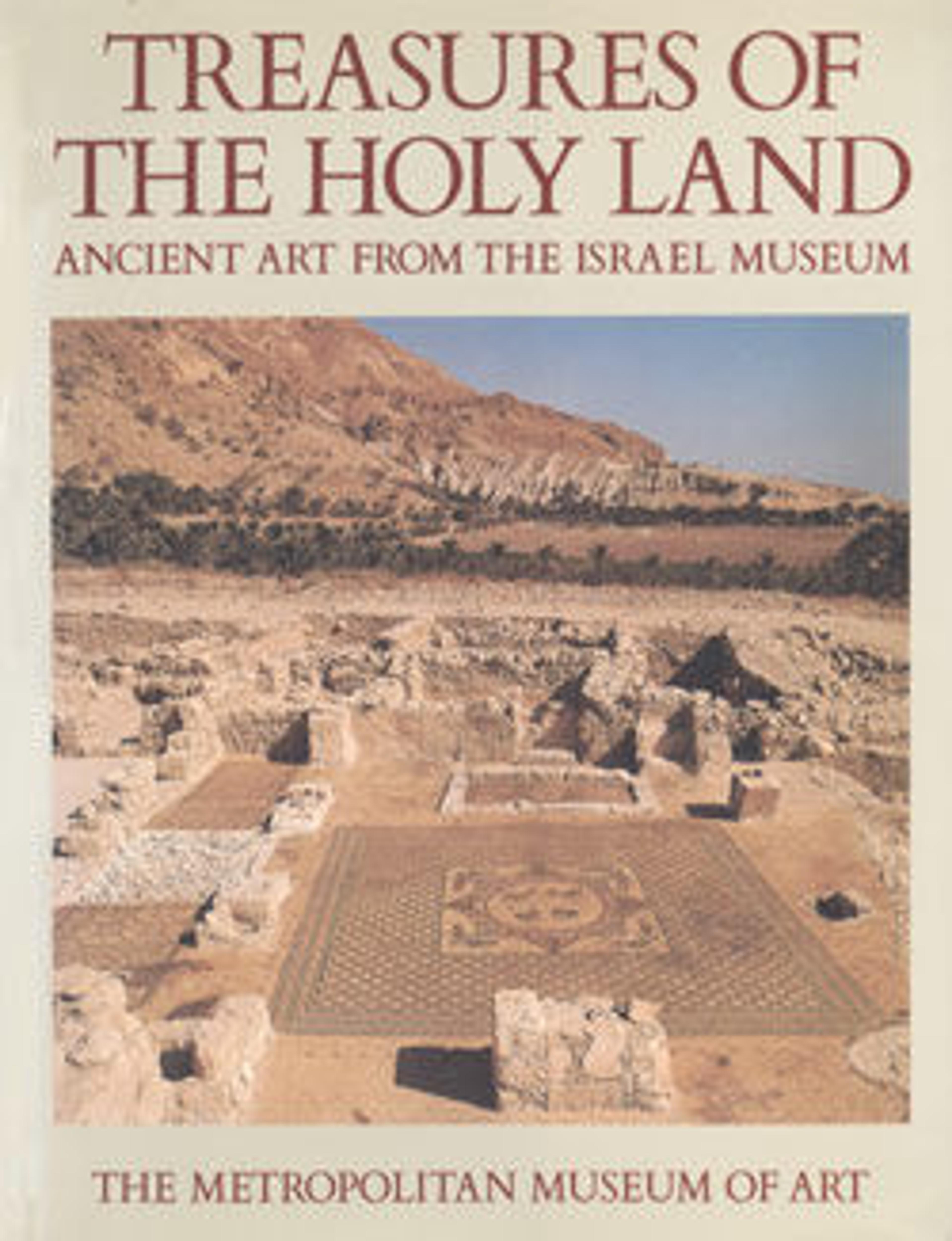
Treasures of the Holy Land: Ancient Art from the Israel Museum
The art and history of the Holy Land are presented here by distinguished members of the curatorial staff of the Israel Museum, Jerusalem. A series of essays examines this land's rich complexity from prehistory through the Islamic conquest of A.D. 640, and almost two hundred works of art are discussed in texts that explore their cultural, historical, religious, and aesthetic significance. Maps, site photographs, and comparative illustrations add to the reader's appreciation of a land whose great intellectual force continues to mold today's world.
Here the Holy Land's somber and joyous history is told in an especially appropriate way. The ancient inhabitants speak directly through their works of art—those objects, often small in size but always majestic in spirit, created to worship the divine, to propitiate malevolent spirits, to commemorate the dead, to delight the living. The region's history can be read in the foreign aesthetic influences that modified and enhanced a strong native style. The appearance of Egyptian, Assyrian, Persian, Greek, Roman, and Byzantine elements indicates the cultural, sociological, and political changes, gradual at times and violent at others, that shaped the Holy Land. The art works discussed here tell of the great events, conflicts, and population movements that formed the Near East, but, as important, they embody the spiritual biography of a people whose religious philosophy became the foundation of Western civilization.
Over many millennia a quest for the divine has been evident in the Holy Land. This religious impulse is as palpable in the gold plaque of a Canaanite goddess from the thirteenth century B.C. as in the synagogue mosaic from Beth Shean which was fashioned in the sixth century A.D. Many objects express a deep love of the natural world: necklaces of glowing carnelian beads that mimic lotus seeds; a plump but ferocious ivory lion; a mosaic pavement with fish frolicking across its surface. A yearning for the beautiful animates the most transcendent and the most mundane works. The same numinous spirit breathes in the noble Shrine of the Stelae from Hazor and in the shapely cups, oil lamps, and bowls that Jerusalemites used some two thousand years ago. Everyday household objects make our ancestors seem our near-contemporaries, but other works emphasize the chasm that separates us from the past. The extraordinary objects of the Judaean Desert Treasure, for example, have a great and touching beauty, but their meaning remains a profound mystery. A number of inscriptions, some of them of remarkable elegance, remind us of how deeply the written language of ancient Hebrew shaped this land's consciousness. The Israelites were the People of the Book, and their compulsion to set down their experience reached its greatest flowering in the Bible. It is thus fitting that Treasures of the Holy Land concludes with a discussion of the most ancient of biblical manuscripts, the Dead Sea Scrolls. Perhaps the greatest archaeological discovery of this century, these scrolls have had an immense impact on the study and understanding of ancient Judaism and Christianity. This publication documents the landmark exhibition organized by The Metropolitan Museum of Art, New York, and the Israel Museum, Jerusalem. The works of art, most of which are displayed for the first time in the New World, are living messengers from an ancient and fruitful civilization; they speak to us of a past that continues to animate the present.
Citation
Avida, Uri, and Metropolitan Museum of Art, eds. 1986. Treasures of the Holy Land: Ancient Art from the Israel Museum; [at Metropolitan Museum of Art from Sept. 25, 1986, through Jan. 4, 1987; at the LosAngeles County Museum of Art from April 9, 1987, through July 5, 1987; and at The Museum of Fine Arts, Houston, from Oct. 31, 1987, through Jan. 17, 1988]. New York.